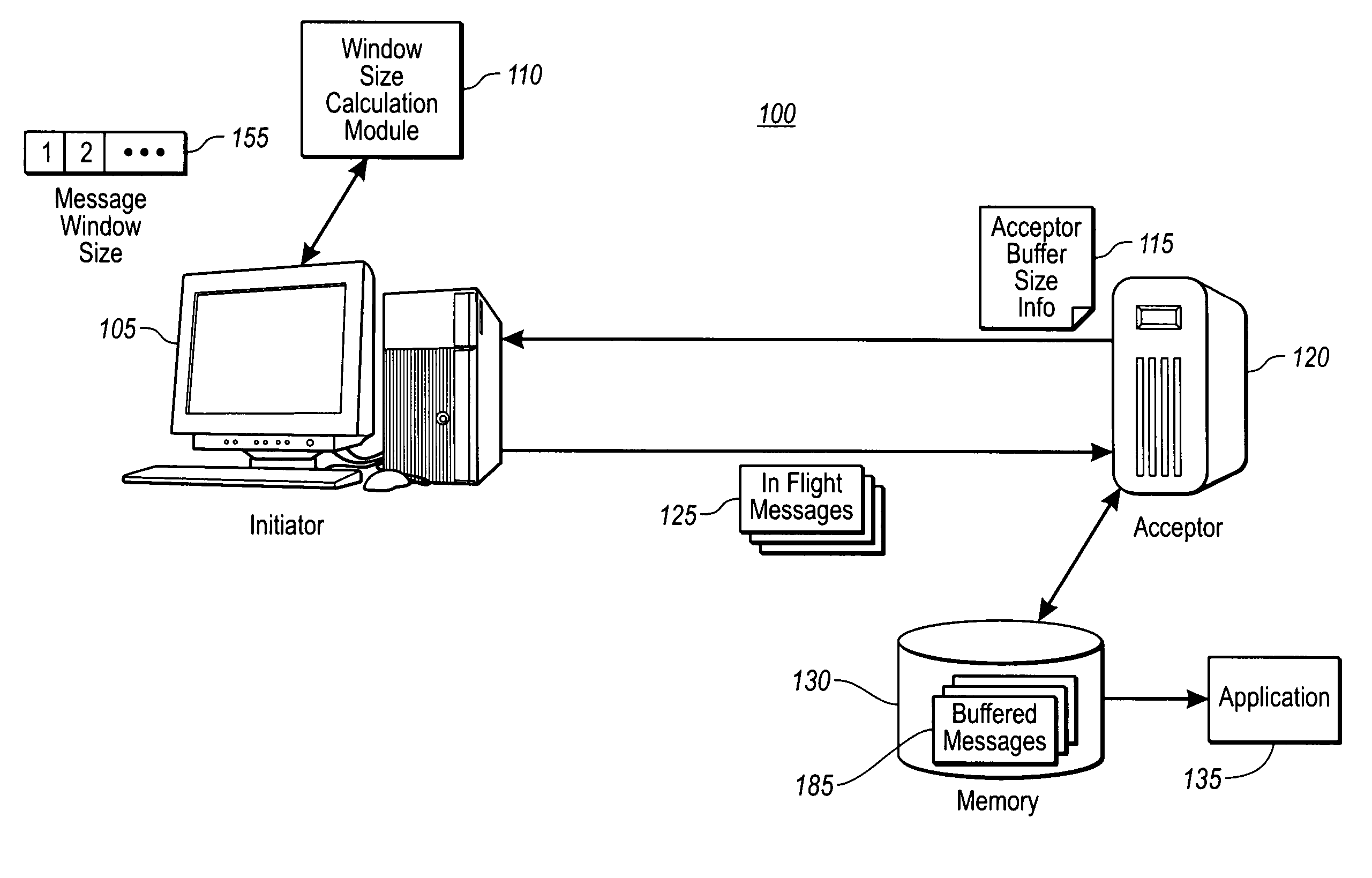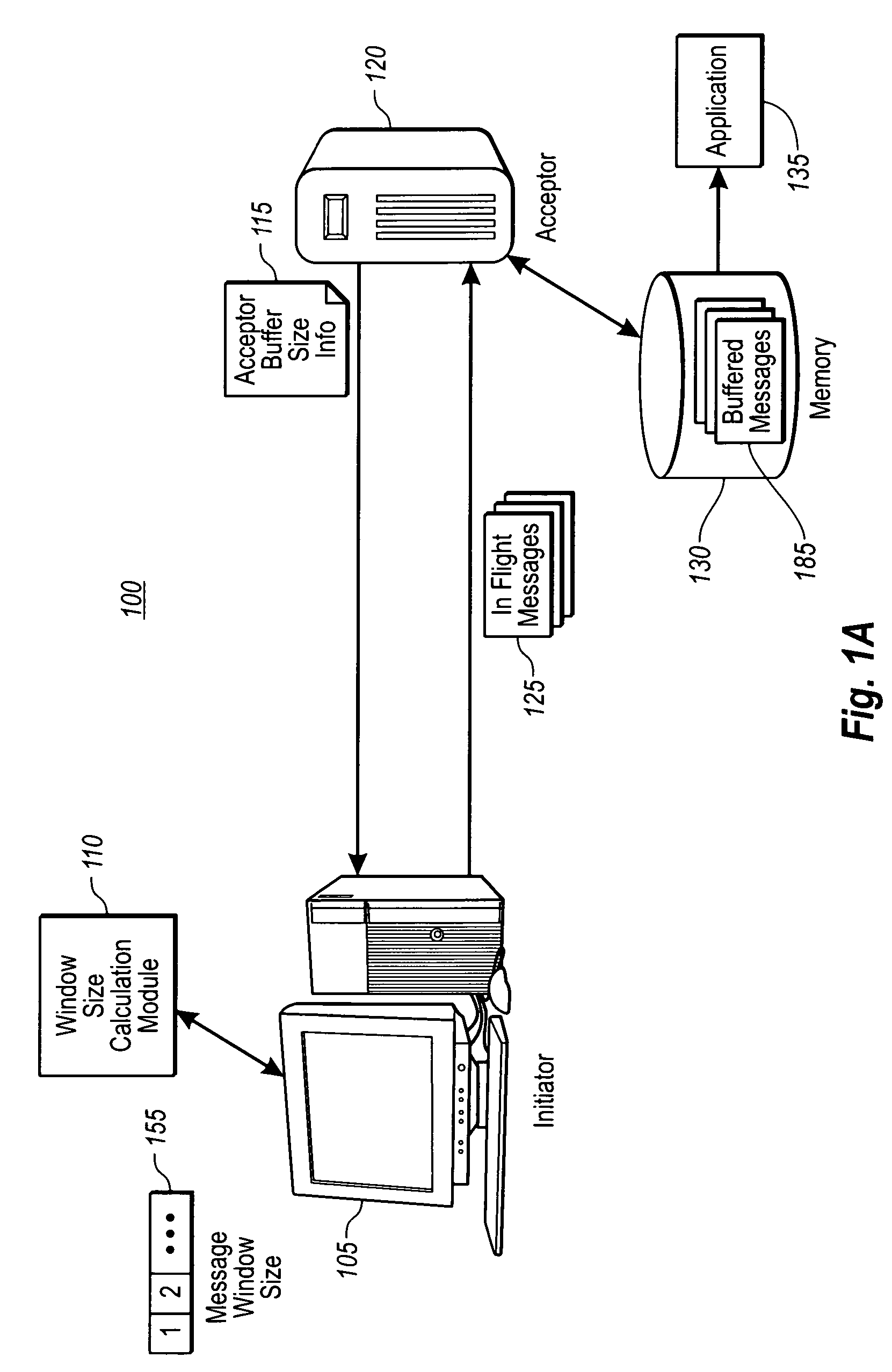Efficient transfer of messages using reliable messaging protocols for web services
a messaging protocol and web service technology, applied in the field of reliable web service messaging, can solve the problems of minimizing latency, reducing network congestion, and reducing the efficiency of message transfer, so as to reduce network congestion and improve network reliability
- Summary
- Abstract
- Description
- Claims
- Application Information
AI Technical Summary
Benefits of technology
Problems solved by technology
Method used
Image
Examples
Embodiment Construction
[0031]The present invention extends to methods, systems and computer program products for flow and congestion control in a Reliable Messaging protocol for Web Services environment. The embodiments of the present invention may comprise a special purpose or general-purpose computer including various computer hardware, as discussed in greater detail below.
[0032]The present invention is directed towards extensions of Reliable Messaging protocols for Web Services (hereinafter referred to as “RM-WS” protocols), which describes protocols that allow messages to be delivered reliably between distributed applications in the presence of software component, system or network failures. Reliable Messaging protocols for Web Services facilitate the successful transmission of a message from a source (hereinafter “an initiator”) to a destination, e.g., a service, (hereinafter “an acceptor”) and ensures that error conditions are detectable. These protocols are transport agnostic, allowing them to be i...
PUM
 Login to View More
Login to View More Abstract
Description
Claims
Application Information
 Login to View More
Login to View More - R&D
- Intellectual Property
- Life Sciences
- Materials
- Tech Scout
- Unparalleled Data Quality
- Higher Quality Content
- 60% Fewer Hallucinations
Browse by: Latest US Patents, China's latest patents, Technical Efficacy Thesaurus, Application Domain, Technology Topic, Popular Technical Reports.
© 2025 PatSnap. All rights reserved.Legal|Privacy policy|Modern Slavery Act Transparency Statement|Sitemap|About US| Contact US: help@patsnap.com



